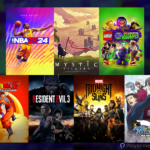While Final Fantasy XVI does feature a same-sex couple and an implied bisexual hero, the depiction of their romance falls short of expectations. Fans had hoped for a groundbreaking portrayal of LGBTQ+ relationships in mainstream video games, but Final Fantasy XVI’s treatment of its gay romance leaves much to be desired.
Related: Starfield Collector’s Edition Is Perfect
Dion and Terence’s Relationship Has Untapped Potential
Dion Lesage, the prince of the Holy Empire of Sanbreque, and his devoted right hand, Sir Terence, share a promising relationship. Dion is admired for his compassion in a monarchy known for its indifference, and Terence’s unwavering loyalty to his boyfriend is evident throughout the game. While their bond provides a fertile ground for fanfiction and speculation, the game fails to fully explore their dynamic. Terence is primarily portrayed as devoted, missing an opportunity for nuanced character development.
Missed Opportunities and Cautious Depiction
Final Fantasy XVI draws inspiration from Game of Thrones by emphasising physical intimacy. While the game includes romantic scenes, such as characters kissing and being naked together, it disappointingly shies away from showcasing Dion and Terence’s relationship. In a pivotal kissing scene, the camera moves away, distancing viewers from the moment. The ambiguity of the shot undermines the significance of the kiss, leaving fans yearning for a more explicit portrayal.
Adding to the disappointment, Dion and Terence spend minimal time together throughout the game. As the narrative unfolds, Dion sends Terence away to ensure his safety and repay a debt. This separation emphasises the high stakes of the conflict and reinforces their devotion to each other. While the scene carries emotional weight, it underscores the missed opportunity to further explore their relationship and provide more instances of love and connection on screen.
Also Read: Final Fantasy XVI’s RPG Elements Are Barely There
Final Fantasy XVI’s Struggle with Queer Intimacy
The Final Fantasy series has shown gradual acceptance and celebration of queerness, with characters like Andrea Rhodea in Final Fantasy VII Remake embracing their identity without reservation. However, when it comes to depicting intimate expressions of queer relationships, Final Fantasy XVI falls short. The game fails to embody its own unapologetic ideals while simultaneously highlighting the relationships of its straight characters.
Final Fantasy XVI’s disappointing portrayal of a gay romance reflects a broader issue in the video game industry. While progress has been made in indie games, mainstream AAA titles still tend to relegate queer men and their relationships to optional content rather than central narratives. While games like Mass Effect and Assassin’s Creed allow players to play as gay characters, male-seeking-male intimacy seldom takes the forefront in AAA video games unless specifically sought out by gay players.
The Need for Authentic Representation
The focus on Ellie from The Last of Us as the “first”, queer protagonist in a AAA game drew criticism, as there were many LGBTQIA+ characters before her. A closer examination of queer characters in video games reveals that they are often presented as options for players to express themselves rather than as the default perspective of the game. While player choice is important, it is crucial for video games to embrace stories centred around queer characters and experiences, just as they do with straight characters.
Also Read: How Long Is Final Fantasy XVI?
Conclusion
Despite the potential for a groundbreaking portrayal of LGBTQ+ relationships, the depiction of Dion and Terence’s romance falls short in Final Fantasy XVI. The game’s cautious approach to queer intimacy and limited exploration of their relationship leaves fans longing for more authentic representation in mainstream video games. As the industry moves forward, it must strive to embrace and celebrate diverse identities without reservation, offering players narratives that authentically reflect the world we live in.
Frequently Asked Questions
Is Final Fantasy XVI the First Game in the Series to Include LGBTQ+ Representation?
Final Fantasy XVI is not the first game in the series to feature LGBTQ+ representation. Previous instalments, such as Final Fantasy VII Remake, have included characters who embrace their queer identities.
Why Is the Portrayal of LGBTQ+ Relationships in Mainstream Video Games Important?
The portrayal of LGBTQ+ relationships in mainstream video games is significant because it promotes inclusivity and representation. By depicting diverse relationships and identities, games have the power to challenge stereotypes and foster empathy among players. Additionally, authentic portrayals of LGBTQ+ characters and their experiences help LGBTQ+ players feel seen, heard, and validated in the gaming community.
Will the Disappointing Portrayal of the Gay Romance Impact the Overall Reception of Final Fantasy XVI?
The impact of the disappointing gay romance portrayal on the overall reception of Final Fantasy XVI will depend on individual players and their expectations. While some fans may be disappointed and feel that the game missed an opportunity to break new ground, others may still find enjoyment in other aspects of the game, such as the gameplay, storytelling, and characters outside of the LGBTQ+ relationship. The game’s overall reception will likely be influenced by a combination of factors beyond just the portrayal of gay romance.





